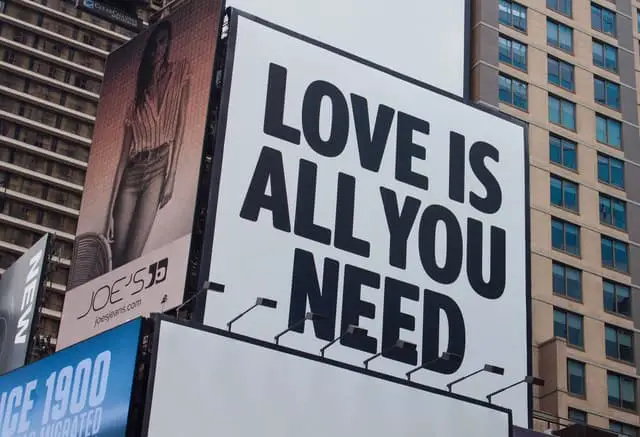Introduction
Launching an advertising campaign for your brand is an exciting project to tackle. If you’re able to target the right customers and write the right copy, you can really turn your business around and generate high revenues.
At the same time, advertising is a bit like a “science”, as it entails a process of testing and refinement that requires marketers and advertisers to follow a strict protocol, paying attention to minute details in order to invest their ad budget wisely.
Here at 440 Industries, we are passionate about online advertising, as through search engine ads brands are able to tap into the customer journey and present their products and services as solutions to the challenges experienced by their customers.
This is a unique advantage that search engines present, as they are able to display ads in relation to the specific search queries that a user has typed. This differs greatly from social media advertising for instance where an ad is presented more as a distraction or interruption in the user’s feed.
Before discussing the 4 steps to designing a search engine ad campaign for your fashion brand, there is another point we’d like to make.
Remember: Advertising is the “Tip of the Spear”
Advertising is not a panacea, even if you create an amazing ad campaign, paid media by itself has limited persuasiveness and is unlikely to utterly convince your customer to purchase a product.
If however, your ad campaign is connected to a broader media presence, where your brand is able to position itself both on organic search results and on social media, then advertising can be the icing on the cake or the ultimate tool to bring home revenue.
This will allow in fact a smoother journey through stages of brand awareness, evaluation of alternatives, and ultimately purchasing.
This is why it can be a good idea to build a strong “marketing funnel” by creating organic content, and a social presence before investing in advertising.
If you’re interested in this fully-fledged strategy in this post, we discuss everything in more detail.
Great! Now that we’ve covered all introductory considerations let’s delve right into it with our 4 tips for a successful search engine ad campaign.
#1 Target Behavioural Keywords and Phrases
The first step to designing a successful ad campaign is realizing that our customers use search engines to collect information and to solve problems.
To some extent, it’s safe to say that they don’t care about our products or our brand unless we make our brand relevant to them.
We can imagine our potential buyers being motivated by their own self-interest, trying to understand the challenges they are facing, and learning about different approaches to solving a problem.
This is why, in order to make our value proposition interesting, we need to target keywords and phrases that connect our product to a problem a user is trying to solve.
In other words, we need to connect our ads to the value the product is bringing to the market.
How can we do that?
Our job as a marketer and advertiser is to identify what kind of value our brand is bringing to the market. But what kind of value are we talking about?
Is it functional (providing athletic clothing or clothing for very cold temperatures for instance), is it social (as in providing social currency or validation) or is it emotional (as in providing an indulgent reward?
Unless we connect to this value dimension, it will be difficult to intercept our customers along their purchase journey as we will not be able to even imagine what they are looking for, or how they may be using our products once they buy them.
If you’re interested in reading more about the value dimension of fashion in this post, we talk all about it.
By figuring out what our customers use our products for, we’ll be able to predict a series of situations where we can identify patterns, behaviors, and habits that will allow us to frame our value proposition in the most effective way possible.
RentTheRunway is an example of a company that developed this approach to the market by focusing on a series of situations where customers could benefit from renting clothing as opposed to buying clothing, connecting it to events and celebrations where users may only wear a garment once.
#2 Create a Valuable and Credible Offer
Only by connecting your product to your customers’ behaviors, you’ll be able to provide the right context and “rewards” that your prospective clients are looking for.
To do this you may want to look at your marketing mix as in Product, Price, Place, and Promotion and identify what set of traits or characteristics provide more value.
Maybe it’s a product’s unique features, maybe it’s is availability or exclusive distribution, maybe is its price.
Whatever the case, advertising requires you to single out the one element that best connects to your customer and to the problem he’s looking to solve.
When it comes to picking one element to focus on it’s hard to make an actual decision based on a gut feeling alone.
That’s why it is common practice to A/B test value offers to see which ones work best. This is where you may need to spend a little money to explore options and optimize your campaign focusing on those ads that best hit the mark.
Once you’ve done that, we also need to work on is making the offer credible.
If you’re providing a very appealing offer, provide a motivation to do so or a reason why your offer is so appealing.
Always make sure you’re providing context to your offer, otherwise, your customers may not take it seriously.
Let’s now move on to copywriting with our next two tips.
#3 Pitch Rewards First, Risks Later
There is always some risk involved in online transactions. You don’t have access to the physical product right away, you need to provide your credit card information, you don’t know for sure how long it will take for a product to get to your doorstep.
That’s why you need to focus on rewards first and position risk later. If you’re able to get your customer to focus on a desirable result it’s much easier to push them through the sales process.
In this sense, it’s important to create copy that emphasizes the benefits as opposed so that your prospective customer may focus on the benefits of the purchase and not think as much about the risks.
In this sense, the first line of your advertising should always connect to the desired result. The second line should provide a clear indication of the solution you’re providing.
Once you’ve framed the value proposition in this format, the only thing left to do is add a call to action.
#4 Define a Clear Call To Action
A call to action is the last line of your advertising copy and it indicated what a customer needs to do in order to take advantage of the offer you’re making.
Maybe it’s “buy now” or “book a spot” or “request a callback”.
It’s a simple thing, but it is mandatory that we complete our ad with a clear indication of the next step that customers need to take so that they are fully aware of what to expect from the rest of the sales process.
An unclear call to action can impact the effort we’ve put in designing our campaign and we should put extra care into these last few words. From the one end, we want to make sure that our message is clear, on the other it can be helpful to use terminology that is not too sales-oriented as it may be a little too harsh towards those customers who are still shopping around and don’t feel like committing just yet.
What will seal the deal is your landing page, where the promises you made on your ad will be substantiated by more screen real estate and more opportunities to validate your offer.
Great! Now that we’ve covered all 4 steps, we can draw a few conclusive remarks.
Conclusions
There you have it! In this post, we’ve covered our 4 top tips to design a successful ad campaign on search engines.
As you’ve seen from our advice, keeping a focus on how your ads connect to the challenges that your customers are trying to overcome – or even simply understand better – is key to presenting your products and services as relevant and valuable.
This approach is also backed by academic research, “Jobs to Be Done Theory” is in fact a marketing framework that allows us to analyze our customer’s behavior to understand what our customers use our products for, and how we should then present them by communicating the value that impacts customers’ lives the most.
If you’d like to read more about this, in this article we discuss in more depth why Jobs to Be Done matters for your business.
Don’t hesitate to take a look at our blog. Here at 440 Industries, we’re passionate about marketing and advertising, and in our blog, we offer a wealth of free resources for your to explore.
If you’re interested in learning more about Content Marketing, don’t hesitate to take a look at our course “Content Marketing for Creative Rockstars“. Our short and to-the-point, online class covers a wide range of topics spanning from developing blog posts capable of driving profitable traffic to strategies for getting strong conversion rates on your landing pages. Here’s a link to the course, if you use the discount code BLOG20 you can access a 20% discount. Enjoy!







